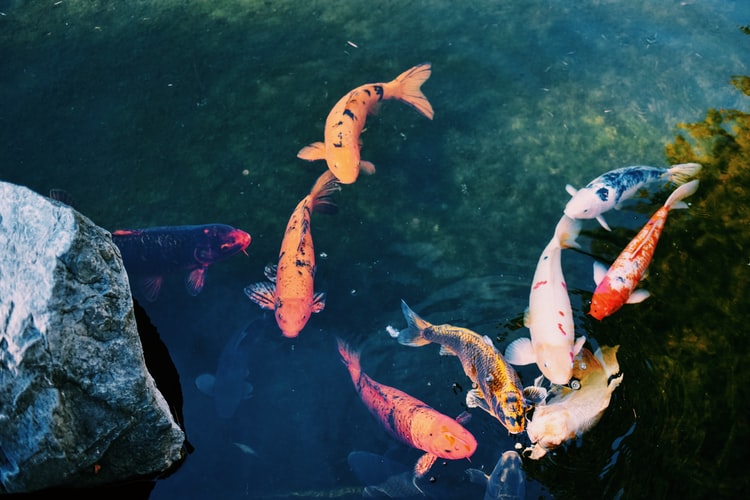Koi carp are among some of the most popular varieties of ornamental fish. They have long been a staple of fish ponds, with such environments allowing the fish to grow to near their full potential. However, they are becoming increasingly common fixtures of indoor aquariums. While introducing koi to an indoor tank can be difficult, it is indeed possible if you undertake some extensive preparation beforehand. The most important thing you’ll need to consider when selecting a tank for your koi is the size of your aquarium. Size requirements can vary wildly, depending on the variety of koi you are looking to stock. Below, we explore tank requirements and other crucial considerations in more detail.
Tank Size Criteria for Koi
Koi carp are well known for their elaborate colour markings and varied aesthetics, but this variety of fish is also pretty diverse when it comes to overall size. Standard koi species tend to grow to maximum lengths of around 15 inches, while Japanese koi varieties can grow to almost double this size. Jumbo koi species tend to dwarf other varieties, with some species growing as long as 36 inches.
Obviously, the bigger the koi species, the larger the tank you will need. Even the smallest of koi species can grow to considerably larger sizes than standard aquarium breeds. Unlike goldfish, the growth rate of most koi varieties is not limited by their environment. While a smaller tank will inhibit the growth rate of koi somewhat, it will not determine their ultimate growth potential.
If you’re looking to play it safe with a standard koi variety, you will need to ensure you have a tank with a minimum capacity of 50 gallons. This guidance only applies to a single koi, however. For every additional koi you are looking to keep, you will need to allow for an additional 50 gallons of swimming space. Therefore, if you plan on housing several koi carp within an internal aquarium, your overall tank size can easily amount to several hundred gallons in capacity.
There’s more to consider beyond swimming space when it comes to selecting a tank for your koi carp. Many varieties of koi carp exhibit certain behaviours and, in order for them to thrive, the tank you pick should support such behaviour. For example, if you’re investing in koi that exhibit shoaling behaviour, your tank should not only be large enough to house a larger group, but also sufficient in size that your fish can move around as a group.
Larger Japanese koi and jumbo varieties can indeed be kept in an indoor tank, but this should never be looked upon as a long-term solution. These larger koi varieties will quickly become too large for them to be able to live healthy lives within the confines of an aquarium, regardless of how large the tank is. However, tanks can be used as rearing environments for such varieties when animals are in their infancy. If you’re worried about predation and younger koi being plucked away by birds and pests before they reach adulthood, it may be an idea to house them in a large indoor tank before introducing them to an outdoor pond at a later date.
Benefits of Keeping Koi Fish in Tanks
Although there are plenty of drawbacks to rearing koi carp indoors, a well maintained aquarium does provide some benefits. One of the most obvious advantages of an indoor tank is that water temperature can be effectively managed. This is particularly handy when it comes to controlling feeding behaviour. Warmer temperatures generally drive higher metabolic response in koi fish so, by maintaining a lower overall water temperature, you will be able to keep the appetites of your koi in check.
As koi are favoured for their aesthetics, an indoor tank also provides you with a better way to observe them. Unlike outdoor ponds, which are regularly plagued by algae blooms and other unsightly residue, water conditions in tanks are far easier to maintain.

